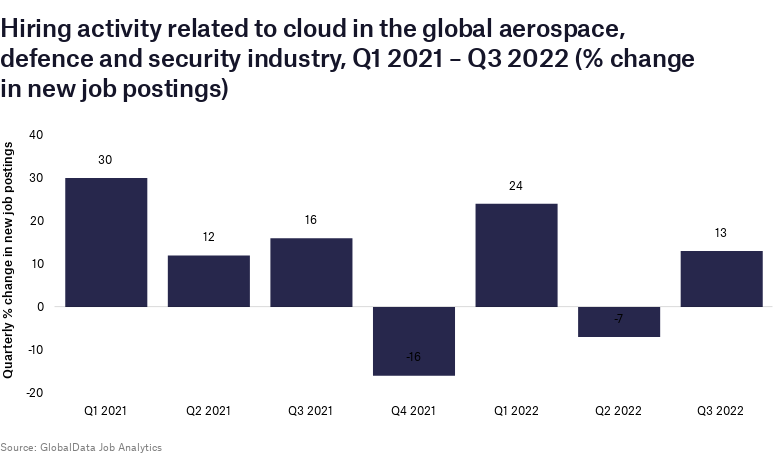The global aerospace, defence and security industry experienced a 13% rise in new job postings related to 3d printing in Q3 2022 compared with the previous quarter, according to GlobalData’s Jobs Analytics. This compares to a 13% increase in the previous quarter and an 138% increase versus Q3 2021.
Notably, Software and Web Developers, Programmers, and Testers jobs accounted for a 12% share of the global aerospace, defence and security industry’s 3d printing-related total new job postings in Q3 2022, down 6% over the prior quarter.
Software and Web Developers, Programmers, and Testers, with a share of 12%, emerged as the top 3d printing-related job roles within the aerospace, defence and security industry in Q3 2022, with new job postings drop by 6% quarter-on-quarter. Miscellaneous Engineers came in second with a share of 8% in Q3 2022, with new job postings rising by 6% over the previous quarter.
The other prominent 3d printing roles include Aerospace Engineers with a 7% share in Q3 2022, Computer and Information Research Scientists with a 5% share of new job postings.
The top companies, in terms of number of new job postings tracked by GlobalData, as of Q3 2022 were Boeing, Raytheon Technologies, Relativity Space and Northrop Grumman. Together they accounted for a combined share of 29% of all 3d printing-related active jobs in the aerospace, defence and security industry.
Boeing posted 738 3d printing-related new jobs in Q3 2022, Raytheon Technologies 424 jobs, Relativity Space 149 jobs, and Northrop Grumman 70 jobs, according to GlobalData’s Job Analytics.
The largest share of 3d printing-related new job postings in the aerospace, defence and security industry in Q3 2022 was in the US with 65% followed by India (28%) and the UK (2%). The share represented by the US was -6% lower than the 72% share it accounted for in Q2 2022.
More Jobs
View More
Who’s hiring who? Hiring activity related to artificial intelligence increased by 25% in the aerospace, defence & security industry in Q3 2022



